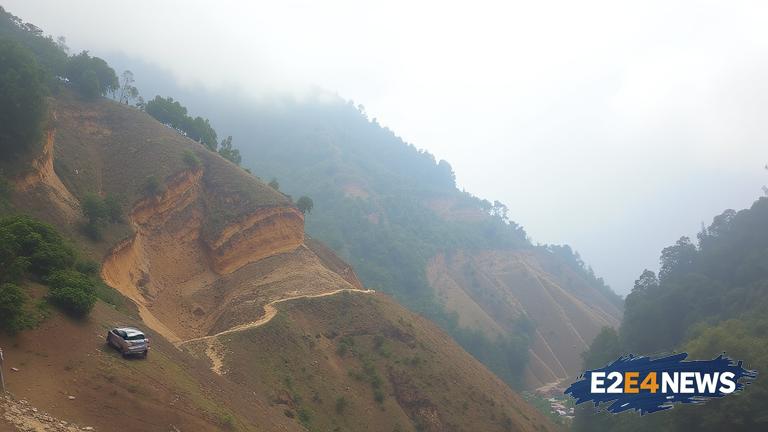The town of Bageshwar in Uttarakhand has been experiencing widening cracks in its terrain, raising alarms about the possibility of a disaster similar to the one that occurred in Joshimath. The cracks, which have been observed in several locations, have led to concerns among residents and authorities alike. The region’s geological instability, coupled with the effects of climate change, has increased the risk of landslides and other natural disasters. Experts warn that the situation in Bageshwar is precarious and requires immediate attention to prevent a catastrophe. The Uttarakhand government has been urged to take proactive measures to address the issue and ensure the safety of the local population. Meanwhile, residents are living in fear, unsure of what the future holds for their town. The cracks in Bageshwar have also raised questions about the long-term sustainability of the region’s infrastructure and the need for more effective disaster management strategies. As the situation continues to unfold, it remains to be seen how the authorities will respond to the crisis and what steps will be taken to mitigate the risks. The incident has also highlighted the importance of environmental conservation and the need to protect the region’s fragile ecosystem. Furthermore, the Bageshwar crisis has sparked a wider debate about the impact of human activities on the environment and the need for more sustainable development practices. In recent years, Uttarakhand has experienced several natural disasters, including floods, landslides, and earthquakes, which have resulted in significant loss of life and property. The state’s rugged terrain and fragile geology make it prone to such disasters, and the situation in Bageshwar is a stark reminder of the risks that exist. The local administration has been working to assess the situation and provide support to affected residents, but more needs to be done to address the root causes of the problem. The central government has also been urged to provide assistance to the state to help mitigate the risks and prevent a disaster. In the meantime, residents of Bageshwar are bracing themselves for the worst, hoping that the authorities will take swift and effective action to prevent a tragedy. The incident has also raised concerns about the impact of tourism on the region’s environment and the need for more sustainable tourism practices. As the situation in Bageshwar continues to unfold, it is clear that a comprehensive and multi-faceted approach is needed to address the crisis and prevent a disaster. This includes not only immediate measures to stabilize the terrain and prevent landslides but also long-term strategies to promote sustainable development and environmental conservation. The Bageshwar crisis is a wake-up call for the authorities and the local population, highlighting the need for greater awareness and action to protect the region’s fragile ecosystem. Ultimately, the situation in Bageshwar serves as a reminder of the importance of prioritizing environmental conservation and sustainable development to prevent such disasters from occurring in the future. The local community is coming together to raise awareness about the issue and to demand action from the authorities. Social media campaigns have been launched to highlight the situation and to mobilize support for the affected residents. The incident has also sparked a wider debate about the role of human activities in exacerbating natural disasters and the need for more effective disaster management strategies. As the situation continues to unfold, it remains to be seen how the authorities will respond to the crisis and what steps will be taken to mitigate the risks and prevent a disaster.





